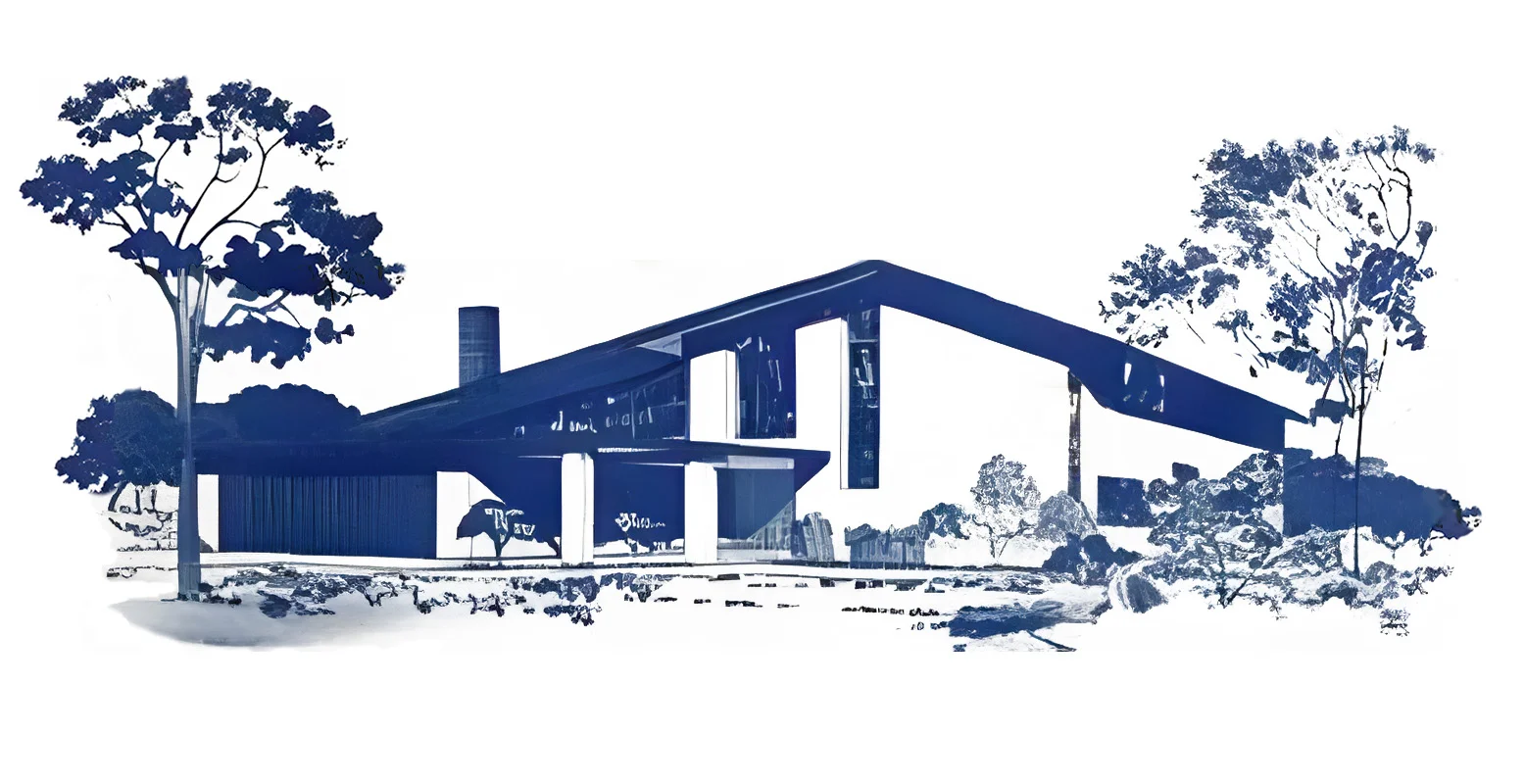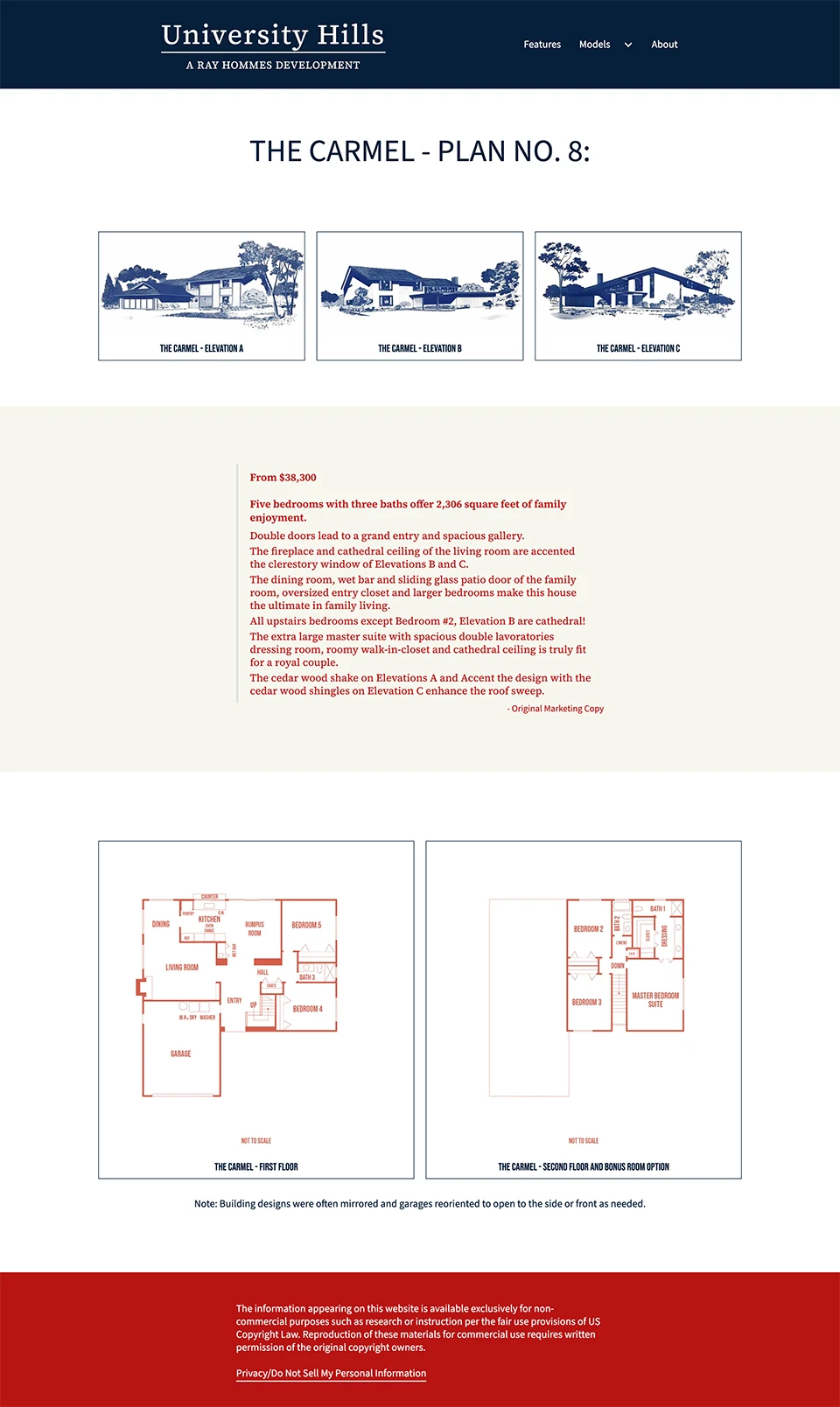
Unveiling a Neighborhood's Charm
As Originally Marketed to New Homeowners
Brief
This Webflow site is an online resource for people interested in this San Diego neighborhood's original houses. The majority of the content is from a late 60's home sales brochure by developer Ray Hommes reformatted to make sense in an online context. Elevations were enlarged with AI tools and reworked as standalone images. Plans were redrawn for legibility.
Tools
- Webflow
- Bitbucket
- Netlify
- Adobe Illustrator
- Adobe Photoshop
Role
- Web Designer
- Illustrator
Year
2023
Background
In the summer of 2019 I bought a late 60's home in San Diego. It's not the oldest home I've owned but it's close to needing the most work. While thinking about alterations I lucked on to marketing brochure that had been scanned and uploaded online. It turned out to be useful as a construction resource by providing hints to what could be under layers of improvements.
In 2023 I began to follow the progress of the City's update of the neighborhood community plan on Nextdoor. I became involved with HelpSaveUC, a group that's trying to prevent an uncontrolled upzoning of the neighborhood. Our fear was that this would replace the existing single family houses with apartments and condos. I like new buildings but I also felt that there was value to the neighborhood houses beyond the location and utility.

Most of our houses aren't as innovative the Eichler's of that era or custom designed by architects. These homes were built with features and in styles that appealed to a wide range of middle class families in the late 60s. They have the potential to be updated with contemporary finishes and room layouts that reflect current tastes and needs.
In high school, history was taught as a way to avoid the mistakes of the past. In architecture school it was focused on educating future practitioner about humanity's significant achievements in building. In between the pragmatic and more lofty goals, I think there is value in knowing of how our homes were originally conceived, marketed and built.
Content Driven Design
The primary audience being homeowners led me to use the elevation renderings as a primary way to navigate the site. After all, how many people would know the original model names of their homes?
Home Page
I also felt that the historical context had to be front and center on the home page instead of its own section or dispersed the way it was in the brochure. It wasn't earth shattering or significant information on its own. This was a for-profit speculative development designed for middle class buyers.

Visual Navigation
Quotes


Map & Street Key
Sources

Carmel Model Page
Each page features elevations of the 3 variants of each model. Clicking on an elevation opens a lightbox display of the 3 images at higher resolution. The original features and price are quoted next. Plans redrawn for legibility are displayed at the page end.

Response
The website received a positive reaction from a few neighbors on NextDoor. The low original prices as compared to current listings were noted.
Another neighbor reached out and gave me a set of construction drawings from an earlier subdivision within the University Hills development. The houses on this street were designed with clay tile roofs and wood details on stucco inspired by Mexican colonial vernacular or the Hacienda style popularized in the 20's by Cliff May.
Next Steps
I plan on adding drawings of the Hacienda style buildings.
Comparing these surviving documents with the neighborhood has lead me to realize that what was noteworthy at the time doesn't reflect a reality that was more complicated and varied. Perhaps the historical record needs an update.


